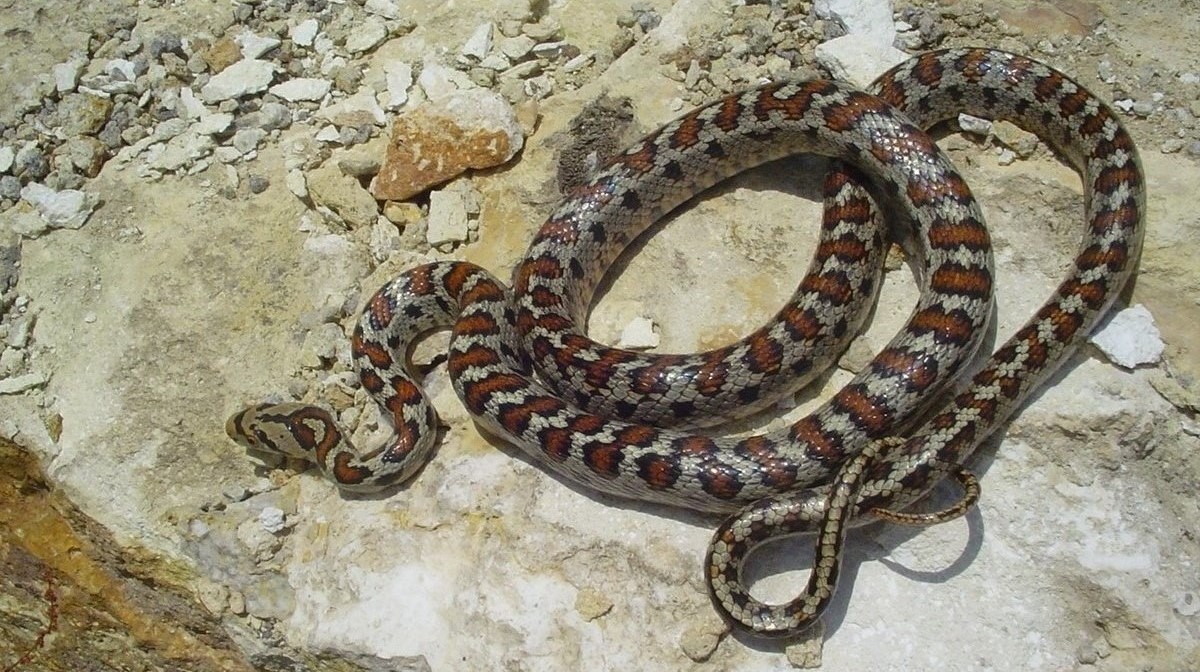
The European Rat Snake, also known as the Elaphe longissima, is a fascinating species that has captured the curiosity of herpetologists and snake enthusiasts around the world. This non-venomous snake is widely distributed across Europe, from the Iberian Peninsula to parts of Western Russia. With its striking appearance, unique behaviors, and adaptability to various habitats, the European Rat Snake has become an intriguing subject of study.
In this article, we will delve into the astonishing facts about the European Rat Snake, shedding light on its physical characteristics, habitat preferences, feeding habits, reproductive behaviors, and more. Whether you are a reptile enthusiast or simply intrigued by the wonders of the animal kingdom, join us as we explore the mysteries of this remarkable serpent.
Key Takeaways:
- European Rat Snakes are non-venomous, colorful climbers with a varied diet, impressive reproductive ability, and long lifespan. They face threats from habitat loss but can be affectionate pets with proper care.
- These snakes are skilled climbers with vibrant coloration, impressive length, and camouflaging abilities. They are active hunters, preferring shelter in crevices, and can become friendly pets with proper handling.
A Colorful Sight
The European Rat Snake, also known as Elaphe longissima, is renowned for its strikingly beautiful coloration. It showcases a wide range of hues, such as vibrant reds, browns, oranges, and yellows, making it an eye-catching species.
Impressive Length
The European Rat Snake can grow to impressive lengths, reaching up to 6 feet or even longer. This makes it one of the largest snake species found in Europe.
Wide Distribution
Native to Europe and parts of Asia, the European Rat Snake has a wide distribution range. It can be found in various habitats, including forests, grasslands, and rocky regions.
Excellent Climbers
European Rat Snakes are exceptional climbers. They are known for their agility and ability to scale trees and climb vertical surfaces with ease, using their muscular bodies and non-slip scales.
Non-Venomous Species
The European Rat Snake is non-venomous, relying on its powerful constriction technique to subdue its prey. It is a constrictor, meaning it wraps its body around its prey and applies pressure to suffocate it.
Varied Diet
These snakes have a varied diet, primarily consisting of small mammals, including rats, mice, and voles. They are also known to consume birds, eggs, and occasionally even small reptiles.
Impressive Prowess
The European Rat Snake possesses an incredible reproductive ability. A single female can lay a large clutch of eggs, which can range from 10 to 30 eggs in a single breeding season.
Camouflaging Skills
These snakes have fantastic camouflaging abilities. With their intricate color patterns and markings, they can blend into their surroundings, making it easier for them to ambush prey and avoid predators.
Long Lifespan
The European Rat Snake has a relatively long lifespan compared to other snake species. It can live up to 20 years or more in captivity, provided with proper care and a suitable environment.
Threatened by Habitat Loss
Due to habitat loss and degradation, the European Rat Snake population is under threat in some regions. Deforestation and urbanization are major factors contributing to the decline of their natural habitats.
Preferred Shelter
These snakes prefer to seek shelter in crevices, rock piles, and old abandoned burrows of other animals. These hiding spots provide them with protection from predators and help regulate their body temperature.
Active Hunters
European Rat Snakes are primarily active during the day. With their excellent eyesight, they are able to locate and capture their prey efficiently, exhibiting strategic hunting behavior.
Affectionate Behavior
Despite their intimidating appearance, European Rat Snakes can exhibit affectionate behavior towards their human keepers. With proper handling and socialization, they can become docile and friendly pets.
So, there you have it – the 13 astonishing facts about the European Rat Snake. From their vibrant coloration to their impressive climbing skills, these snakes are truly captivating creatures. Whether in the wild or as pets, they continue to fascinate snake enthusiasts and researchers alike.
Conclusion
In conclusion, the European Rat Snake is truly a fascinating creature. As one of the largest snake species found in Europe, it boasts several astonishing facts that make it stand out. From its ability to climb trees and swim, to its unique pattern and impressive size, the European Rat Snake is a true marvel of nature.Not only does it play a vital role in controlling rodent populations, but it also serves as an important part of the ecosystem. Its adaptability and endurance have allowed it to thrive in various habitats across Europe.Whether you’re amazed by its ability to mimic venomous snakes or its distinctive coloration, the European Rat Snake is undoubtedly a remarkable creature worth learning about and appreciating. So next time you come across one, take a moment to observe and appreciate the wonders of this intriguing reptile.
FAQs
Q: Are European Rat Snakes dangerous?
A: No, European Rat Snakes are not venomous and are not considered dangerous to humans. They are usually docile and non-aggressive, preferring to escape and hide when faced with a potential threat.
Q: What do European Rat Snakes eat?
A: European Rat Snakes primarily feed on small mammals such as mice, rats, and voles. They are excellent hunters and rely on their constriction abilities to subdue their prey.
Q: How big can European Rat Snakes grow?
A: European Rat Snakes can grow up to 4 to 6 feet in length on average, with some individuals reaching lengths of over 7 feet. They are considered one of the larger snake species in Europe.
Q: Where can European Rat Snakes be found?
A: European Rat Snakes are native to various countries in Europe, including Spain, Portugal, France, Italy, and parts of central and eastern Europe. They can be found in a range of habitats, including forests, grasslands, and rocky areas.
Q: Are European Rat Snakes protected?
A: European Rat Snakes are not currently listed as a protected species. However, habitat loss and fragmentation pose a threat to their populations, emphasizing the importance of conservation efforts to ensure their survival.
Delving into European rat snakes' fascinating world is just the beginning of your reptilian journey. Uncover more captivating reptiles facts, from their unique adaptations to their vital roles in ecosystems. Explore the intriguing realm of non-venomous snakes, like false water cobras, and learn about their behavior and habitats. Finally, discover the importance of conservation efforts in protecting these incredible creatures and their natural homes for generations to come.
Was this page helpful?
Our commitment to delivering trustworthy and engaging content is at the heart of what we do. Each fact on our site is contributed by real users like you, bringing a wealth of diverse insights and information. To ensure the highest standards of accuracy and reliability, our dedicated editors meticulously review each submission. This process guarantees that the facts we share are not only fascinating but also credible. Trust in our commitment to quality and authenticity as you explore and learn with us.


